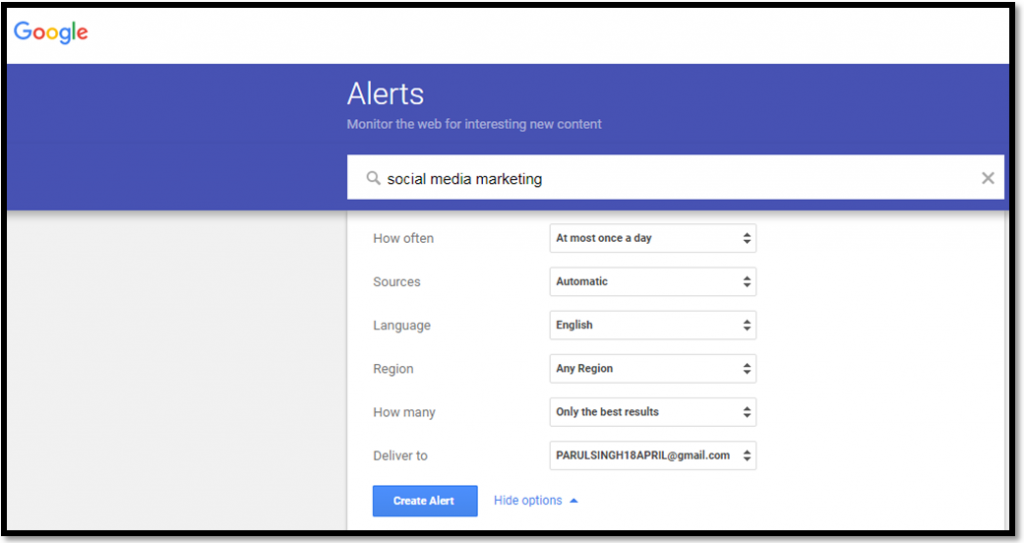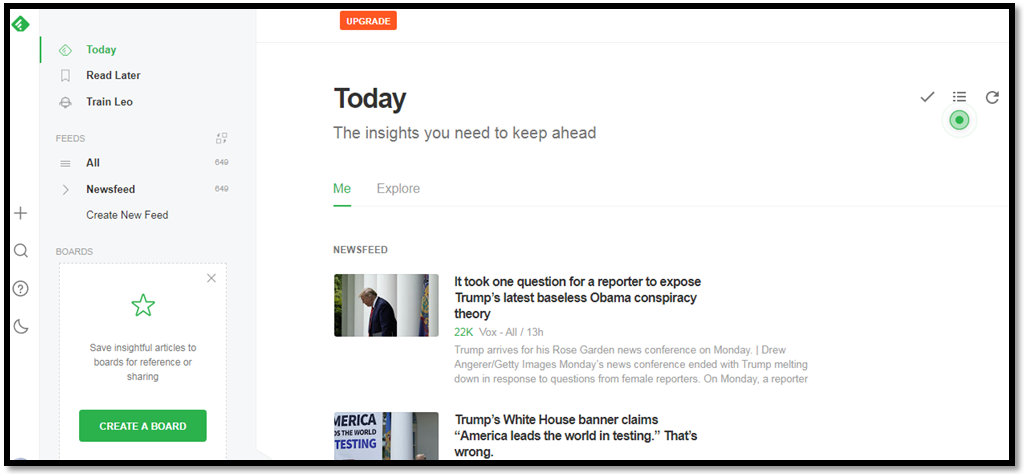Toggle navigation

We live in an age where brands are leaving no stone unturned in creating meaningful engagement with their audience. To facilitate this engagement, they need tons of high-quality content.
Creating original content on a consistent basis isn’t a cakewalk; it requires a great deal of creativity, time, and money. Besides, there’s no certainty that your audience will engage with the content you create. So, to make sure you keep your online audience engaged without draining your valuable resources, you have to ace the art of content curation.
But creating an effective content curation strategy comes with its own set of challenges. With so many sources out there, it’s difficult to figure out where to look for relevant, high-quality stuff, how to select the best content, and how to manage this content once you are through the initial stages of content curation.
In this guide on content curation, we will elucidate all the aspects of content curation to help you craft an effective content curation strategy in 2020. So, let’s dive in.
|
Table of Contents
|

The very first step would be to figure out the topics around which you will be curating content. Otherwise, you may end up posting on topics that are irrelevant to your audience or don’t reflect your brand.
At this stage, it’s vital to assess what kind of content your audience is interested in. Does your audience like to watch informative videos? Or, is it more interested in fun stuff?
Identify the type of content your audience likes and curate content around it. Does your audience like to watch videos? Do contests and polls interest them?
To assess what captures their interest, analyze your social media posts from the past 3-6 months. Look for posts that have garnered the maximum likes, comments, shares, or views. You can, accordingly, choose to curate content around those specific topics.
The most time-consuming part of any content curation process is discovering the sources where you can find relevant, high-quality content.
Remember, 75% of any content curation strategy is content discovery. So, if you feel like spending too much time in this stage, especially during the initial stages, don’t fret.
Here are some ways through which you can source quality content:
a) Email Newsletters

Email newsletters are a repository of content curated from reputable sources across the web. So, if you have subscribed to some of these newsletters from your industry, you will have access to a plethora of valuable stuff to choose from.
If you want to curate a collection of newsletters you can subscribe to, check out Letterlist.
SmartBrief has a list of over 200 newsletters, segmented according to industry. You may find some relevant stuff there.
b) Google Alerts

If you want to access the latest stuff related to your topic, you can set up Google alerts for the topic of your choice. But keep in mind two things: first, keep your search as specific as possible otherwise your inbox may get flooded with information you are not even looking for. And second, skim through the content properly to make sure it’s something that interests your audience.
c) Forums and Groups

Another valuable source of content is forums and groups related to your niche. Forums such as Reddit and Quora are question-answer websites where people constantly engage in discussions on topics that are trending in your industry. So, you can use these forums to choose curation topics that are likely to gain more eyeballs.
d) Manual Research
While manual research may seem time-consuming, it often gives you the best results.
If you are constantly reading articles on your industry, you must be coming across lots of high-quality stuff now and then. So, once you have discovered a couple of share-worthy articles on your industry, bookmark them in your browser and organize them into a folder.
Later on, you can visit these bookmarks, open these articles, and share the ones you have scheduled.
You can use content curation tools like Pocket to bookmark the pages of your choice and use them later as curated content.
e) Content Aggregation Websites

These are websites that collect different content including news articles, social media posts, images, and videos on various topics around the internet and make them accessible in one place.
Content aggregator websites such as Feedly let you see the latest posts from the websites of your choice. You can bookmark all these websites on Feedly and share them on the platforms of your choice.
Many of these content aggregators can be integrated with social media management tools like Sprout Social, so you can easily source content from these aggregators and schedule and publish them through these tools.
f) Social Media Posts

A great benefit of content curation is that it helps you save time. So, if time is a constraint for you, social media posts can be a great option. Almost every social network out there has a way of resharing the content other users have published on their wall.
For instance, on Twitter we have Retweet, on Facebook we have Share, on Pinterest Repin, and so on. An exception to this is Instagram. While they have been testing a Regram button for sharing posts, they haven’t launched it yet.
If your brand has a respectable following on social platforms, you can capitalize on their loyalty and ask for user-generated content (UGC).
You can encourage these users to post images or videos featuring your product and tag your brand/product. To make it easy for people to curate content, you can create a branded hashtag for people to use.
g) Your Own Content
Content curation does not always mean you have to share content from other sites. You can always repurpose some of your popular stuff and curate it across social media channels.
As a matter of fact, around 29% of businesses repurpose their own content.
You can repurpose a popular blog from your website as an infographic or an e-book into a couple of pictures and share them on Facebook, Twitter, and Instagram.
Once you have discovered the sources from where you can gather quality content, read it first to make sure it deserves a place in your curated list.
The content needs to be unique, interesting, and useful. If you see your attention faltering while reading, don’t read further. The point is simple: if the article doesn’t hold your attention, it won’t hold your viewer’s attention either. If you feel you have read that kind of stuff a couple of times, it’s not worth a share.
Here are a few things that you need to keep in mind while selecting content for curation:
Assess if the Content is from a Reputable Source
If you want to maintain the credibility of your brand, check twice if the content comes from a reputable source. If the content is shallow or inaccurate, nobody would be interested in reading it.
Here’s how you can check if the content is from a credible source: Download MozBar plugin for your browser. The browser extension will tell you the domain authority (DA) for the website the content is posted on. The higher the domain authority, the more credible the website it.
Identify if the Content goes with your Brand’s Voice and Tone
Different brands try to portray different personality traits through their marketing channels: sophistication, sincerity, ruggedness, excitement, or competence. So, the content you share needs to be aligned with your brand’s voice and tone. Otherwise, your brand’s image will suffer.

Once you have chosen what to share, it’s time to schedule and share your content using a proper suitable scheduling tool.
Buffer is one of the best platforms out there for content scheduling and sharing. You can set up a customized schedule depending on when your posts tend to get maximum engagement. And this schedule will remain as it is for as long as you want.
You should try adding personal touch while curating. Tweak your content to suit your brand’s personality. It gives superior results when compared to a mere copy-paste job.
It’s always recommended to plan ahead so that the curated content blends beautifully into your content scheduling routine. You can first schedule your calendar with your own content and then use curated content to fill in the gaps.
Decide how much of the total content you want to curate. Figure out what percentage of your content will be original and how much will be curated from other sources. The ratio of original to curated content will vary depending on the platform you post on. For example, you may share more curated content on Twitter than on Instagram.
Not many marketers pay attention to the analysis part of content curation. They just post content and forget about it.
Diving deep into your social media analytics to see what’s working and what isn’t helps you gain insights on the future and refines your content curation strategy.
For example, if you find that a certain category of content resonates well with the audience, tweak your strategy in such a manner that kind of content appears more frequently in your calendar.
Reinforce Curated Content with Compelling Visuals: Add visuals to grab viewer attention. Consider adding infographics, images, videos, and presentations to refine your content.
Reach out to Influencers in your Niche: Connect with the influencers in your niche for curating content that resonates well with your audience.
Offer Context to your Target Audience: This is a crucial aspect of content curation that you should pay attention to. Your content should answer why it’s relevant to the target audience.
Hook Readers with an Eye-Catching Title: Your title should entice the audience to read your content.
Seek Inputs from the Audience: Remember, you are curating content for the audience. So, you can smoothen the curation process by using their inputs in your strategy.
Analyze your Popular Posts: Mine the most popular posts on your social media accounts to identify what kind of information your readers are interested in.
Do you have useful tips on content curation? Please scribble in the comment section below.
Leave a Reply